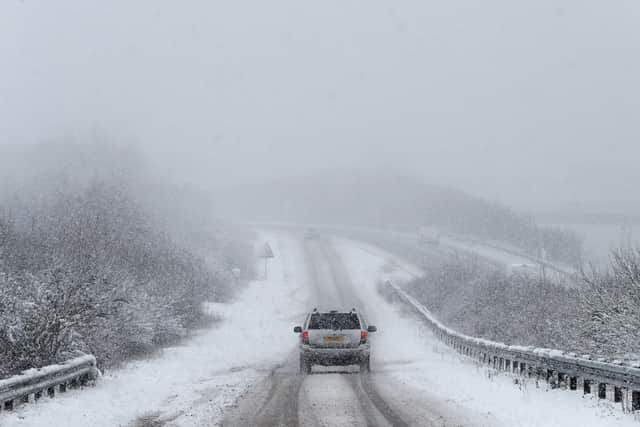Experts reveal top tips on how to drive safely in the snow - amid UK weather warnings
and live on Freeview channel 276
As usual winter in the UK has brought with it treacherous road conditions. Most parts of the UK have woken up to a blanket of snow, and the Met Office has suggested that more could be on the way.
The cold conditions will bring much travel disruption across public and private transport, and snow will only see concern grow for those commuting to and from their home. It’s well known that driving in snow can prove extremely hazardous, especially on less frequently used roads, and with snow lying across a good chunk of the UK the risks will only increase.
Advertisement
Hide AdAdvertisement
Hide AdSo, what are the best ways to keep safe while driving in the snow? The experts at Bill Plant Driving School have shared five tips to help motorists drive safely in snow.
5 tips to help you drive safely in snow
1. Check your windscreen wipers
Visibility is key in wintery conditions and you should make sure to double check your wipers are in working order before setting off on any journeys. Also check for wear and tear in the rubber, as well as if the wipers leave smears and dirt, when deciding on replacing the blades.


2. Avoid harsh acceleration
Control is critical when it comes to driving in the snow and every manoeuvre should be completed slowly and with care. Be gentle on the throttle and set off smoothly using low revs, as any harsh acceleration could cause wheel spin. If you are slowing down then constantly be ready to gently brake as you go down through the gears, as this will help alert road users behind you of your indication with the brake lights.
3. Drive in a high gear
Pulling off in second gear is advised, whilst easing off the clutch gently to avoid wheel spin. Once in motion, it is wise to drive in as higher gear as possible, and this is because you will be keeping your revs lower and in turn reduce your wheel spin.
4. Consider your stopping distance
Advertisement
Hide AdAdvertisement
Hide AdStopping distances usually double in wet conditions, but in snow and ice you should be looking to leave a gap which is up to 10 times bigger than standard. Bill Plant Driving School advises that gear changing and braking should be avoided where possible, especially on hills where you should wait till the traffic is clear before keeping a constant speed.
5. Use your headlights
With shorter days in the winter months, side lights or full headlights are commonly in use most of the time. Using headlights when visibility is seriously reduced is a must.Fog can also cause problems and front or rear fog lights can be used when there is little visibility. A normal rule of thumb when deciding to use headlights is when you can’t see further than 100 metres.
Comment Guidelines
National World encourages reader discussion on our stories. User feedback, insights and back-and-forth exchanges add a rich layer of context to reporting. Please review our Community Guidelines before commenting.
